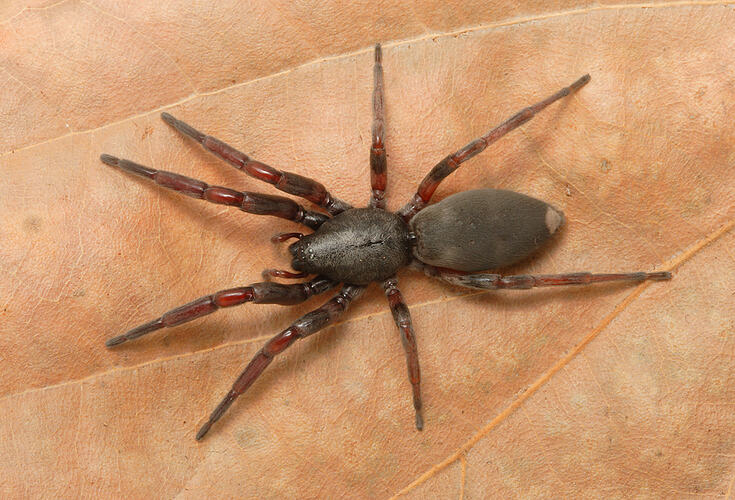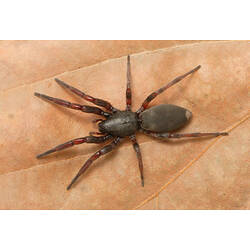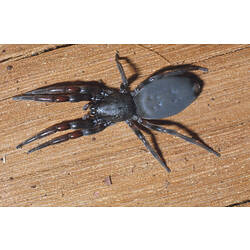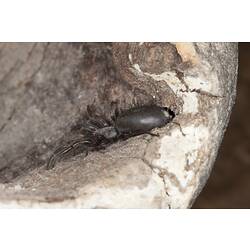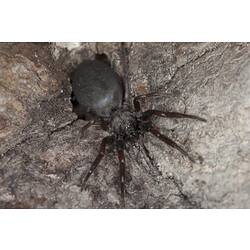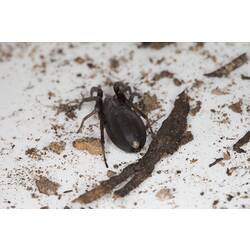General Description
Abdomen long and dark grey with a dull white patch at the end. Legs red-brown, front two pairs point forward. Males have two pairs of pale spots on the abdomen. Body up to 1 cm long (male), 2 cm long (female).
Biology
White-tailed Spiders often wander, hunting at night to catch other spiders. They are known to hide inside houses during the day, in beds and clothing.
Distribution
Southern mainland Australia and Tasmania.
Habitat
Under bark and rocks, also inside buildings.
More Information
-
Animal Type
-
Animal SubType
-
Brief Id
Long dark grey body, white spot at end of abdomen.
-
Colours
Grey, Black, Red, Brown
-
Habitats
-
Where To Look
-
Diet
Spiders
-
Hazards
White-tailed Spider bites are suspected of causing large-scale necrotic lesions, but there is little evidence to support this. Reactions range from nothing, to redness and swelling, nausea or blisters.
-
Endemicity
-
Conservation Statuses
CITES: Not listed, FFG Threatened List: Not listed, EPBC Act 1999: Not listed, IUCN Red List: Not listed
-
Web
Hunter
-
Taxon Name
-
Scientific Author
(Koch, 1866)
-
Common Name
White-tailed Spider
-
Kingdom
-
Phylum
-
Subphylum
-
Class
-
Order
-
Infraorder
-
Family
-
Genus
-
Species Name
cylindrata
